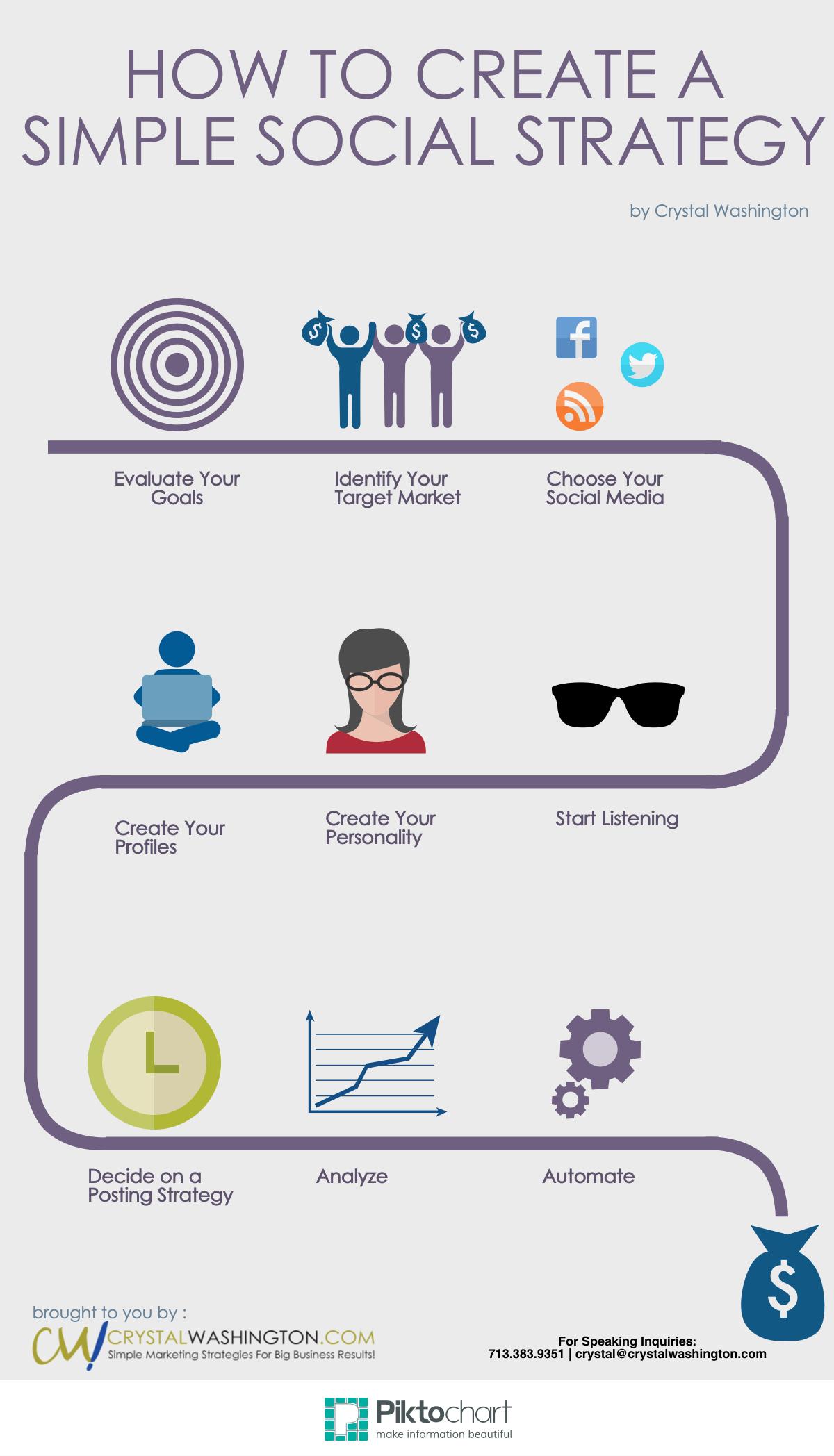It’s a New Year and a new you! Or, at least, that’s what most of us are in the habit of saying. We create resolutions and set goals and are determined to follow through. However, somewhere around February 1, the new shine of the year wears off and, for most people, the commitment to achieving those goals.
If one of your goals is to use social media in 2015 to get a new job, grow your following, or attract business, using off-the-cuff tactics will not sustain you throughout the year. You’ll start off strong, and then lose steam.
Create A Social Media Plan You Can Easily Follow
A social media strategy plan needn’t be a novel. A single page, posted in a prominent place where you’ll see it daily, will keep you on track. All you need to do is set aside a few minutes, and the commit to being consistent in follow-through.
9 Steps for Creaing a Social Media Strategy
- Identify your goals. What are you needing to accomplish on social media? Do you need to increase website traffic by 30% over the next 60 days? Are you wanting to connect with one new industry influencer per week? Whatever your goals may be, write them down and ensure they are measurable.
- Identify your target market. Who do you want to connect with on social media? Be as specific as possible and include demographic, geographic, and even psychographic characteristics. Be sure to include job titles, if applicable.
- Choose your social media. What social media is the best fit to help you achieve your goals, yet attracts your target market? If your target market consists mostly of middle-aged, male, C-level executives, Instagram will likely not be a good fit. If you want to connect with newly-engaged women in cities to get them to visit your wedding gown website, Pinterest or would make much more sense than LinkedIn.
- Listen. Prior to creating profiles or posting, observe your competitors, influencers and potential clients on your chosen social networks. What are they posting? What type of posts get the most traction? Are they using specific hashtags on Twitter or Instagram? Are they members of certain groups on LinkedIn.
- Create a Persona. Outline your posting personality. If you are creating this plan for an organization, take the time to write out a few words describing the personality of the brand. What would it look like if it were a person? Does the persona have a sense of humor? Is it a fan of pop-culture references? If you are creating a persona for yourself, pull those aspects of your personality that you will use in posting and decide which parts of your life remain separate. For instance, some people choose to not post about certain topics or their family.
- Create your profiles. This is a great time to use a graphic designer for customer Twitter backgrounds and Facebook headers. If you do not already have a designer, websites like guru.com, odesk.com, and elance.com have many capable contractors.
- Decide on a posting strategy. How often will you post on each social network and/or your blog? If you are part of an organization, who all has the ability to post? What types of items will you post on each network. How often will you check each social network to respond to conversations?
- Analyze. One you start using your posting strategy, analyze your results by reviewing your website analytics, tallying how often recruiters contact you, recording how many purchases you receive as a result of people redeeming promotion codes for social media. Compare your results against the goals you set in #1. Tweak your posting strategy or goals as needed.
- Automate. One you become comfortable with posting and have tweaked your strategy, use tools like HootSuite or Facebook Pages’ scheduled posting feature to schedule posts for days in advance, then set the timers. You can still post in the moment, but this will ensure consistency.
This post originally appeared on the Personal Branding Blog.


